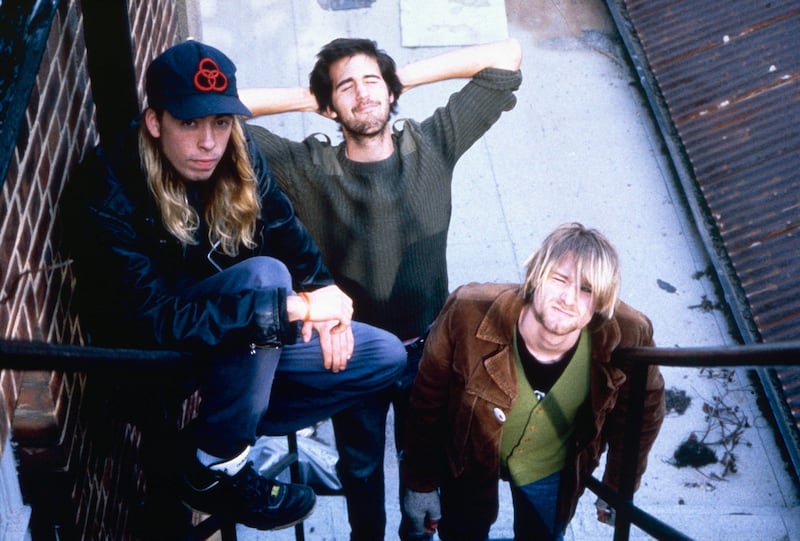As Edna O’Brien was laid to rest, the world marvelled at a career that began with the scandalous novel The Country Girls being set ablaze by the censorious residents of her Co Clare homeplace. “They burned her book,” the Economist’s obituary opened bluntly. “The book would be banned and burned but Edna O’Brien would never be silenced,” Taoiseach Simon Harris said. News agency articles featuring the claim were published from Minneapolis to Malaysia.
But did it actually happen? Catholic Ireland in 1960 was in general more of a burying place than a burning place, in a number of senses, and the idea of a bonfire has long been questioned.
John Horgan, then an Irish Times reporter, looked into the matter in 1966 and failed to turn up any personal recollections of the burning in Scarriff, the east Clare village where it was then understood to have happened. The late priest and writer Fr Tom Stack later said that he had investigated thoroughly and found no evidence whatsoever.
Horgan once asked O’Brien about it directly. “It wasn’t in Scarriff,” she told him. “It was in Tuamgraney.”
Two jailed for life after 53 migrants die in locked truck in Texas
Jurassic Park adviser unimpressed with Steven Spielberg’s dinosaurs: ‘What didn’t he get wrong?’
‘Happiness shines through’: Thousands join Dublin Pride Parade
‘I’m a free man’: Kneecap perform at Glastonbury, as BBC opts not to live-stream set
A local of that parish, University College Cork history professor Tomás Mac Conmara, said the subject has “come up quite often” in conversation. “In relation to the alleged burning, I did note that almost all the people I spoke with, and who experienced that period locally, denied any public burning of Edna’s book,” he says.
O’Brien herself is ostensibly the sole primary source for the allegation and she was, of course, in literary exile in London when it would have taken place. In one version, told to the Guardian in 2008, the book was “burnt after the rosary, one evening in the parish grounds, at the request of the priest”.
In her 2012 memoir, Country Girl, she wrote of her mother’s account of “the shock, the hurt and the disgust” among neighbours – but no reference to matches.
The depiction of rural life in O’Brien’s fiction was felt unfair by some in Tuamgraney as “the embellishment became the reality and over time perhaps became itself the unquestioned narrative”, Dr Mac Conmara said.
Was The Country Girls definitely burned in Tuamgraney? No. Was it definitely not burned? Hard to tell.
Mac Conmara suggests the possibility that an individual priest burned an individual copy. “I don’t know that at this remove in time that you could ever got to the bottom of it,” says Horgan.

A hitchhiker’s guide to Dave Grohl in remote Kerry, 1994
There’s always an Irish angle. When Nirvana drummer Dave Grohl sought to escape from the spotlight in the wake of singer Kurt Cobain’s suicide in 1994, he took to the Ring of Kerry.
“I decided: I’m going to disappear, I’m gonna go to the most remote place on earth, I’m going to get away from everything and figure it out,” he told Graham Norton in 2021.
“I was driving around in my rental car on a country road and I saw this hitchhiker kid,” says Grohl.
Which hitchhiker kid? Only 30 years after the fateful encounter, it emerges it was Lorcán Dunne, a Nirvana fan who was on holiday in the Beara peninsula at the time.
“I saw a car there, so I thought I’d run up and hitch,” says Dunne in a video uploaded to YouTube by his cousin, Claire Tighe.
Cue Grohl on Norton: “I thought, well, maybe I’ll pick him up.” But one problem. “As I got closer to him, I saw that he had a Kurt Cobain T-shirt on.”
Dunne confirms that he saw a “look of shock on the guy’s face” in the passenger seat as the drummer recognised the shirt. “The next thing, the car just tore off away,” he says.
Nobody believed Dunne at the time, of course. But for Grohl, it was a turning point. “I can’t outrun this,” he said. “I need to go home and get back to work.”
So shaken into action was Grohl that the first Foo Fighters album was recorded in October of the same year and released in July 1995. The band are still touring today. So much for the thousand welcomes.
You can take rhododendron off the shopping list
Rhododendron ponticum is the sworn enemy of Ireland’s native woodland, causing problems from Killarney to Ards Forest Park in Co Donegal. Not content with taking over and choking out the forest understory, it’s also toxic to a number of bee species, surprisingly for a brightly flowered, insect-pollinated plant.
Gardeners are still allowed to buy and plant the invasive species as long as they don’t further its mission of taking over delicate wild locations. But not for long.
Malcolm Noonan, the Minister for Heritage, has indicated that his department will introduce new dedicated invasive alien species regulations “in the coming weeks” that will “make it an offence to place listed invasive alien species, including rhododendron ponticum, on the market for sale or exchange”.
Responding to a parliamentary question from Sinn Féin TD Aengus Ó Snodaigh, who advocated a ban from garden centres and supermarkets, Mr Noonan said he would reveal further details in due course.
What links Peter Thiel and Irish local government?
Ethics declarations for the new crop of councillors elected to local government in the recent elections are beginning to filter through. Some are online for constituents’ perusal, while others remain stubbornly, untransparently analogue and require a trip to the council office.
Dublin City Council’s returns reveal nothing of the magnitude of TD Michael Healy-Rae’s New York Times shares, but there are some items of interest. Malachy Steenson, an anti-immigration Independent councillor for the north inner city, lists three items under land ownership or interest: his (redacted) home address, another in Annagassan, Co Louth, and a third residential/home office on Leinster Avenue, from which he practices his trade as a solicitor.
Fine Gael councillor Patrick Kinsella lists only one, taking the opportunity to advertise that the South Spencer Street address in desirable Portobello is “available to rent”.
Occupations – most councillors are part time – vary. Fianna Fáil’s Ammar Ali is a Spar supervisor, among other things. Fine Gael’s Emma Blain edits the Church of Ireland Gazette.
Most remarkably, the Soc Dems’ Eoin Hayes, a Silicon Valley returnee, reveals that he formerly held shares in Palantir Technologies, the big data company founded by billionaire Peter Thiel that has hit the headlines in recent years for everything from a controversial UK NHS contract to a “strategic partnership for battle tech” with Israel. He has since divested of the shares, and works as a consultant in Dublin.
- Sign up for push alerts and have the best news, analysis and comment delivered directly to your phone
- Join The Irish Times on WhatsApp and stay up to date
- Listen to our Inside Politics podcast for the best political chat and analysis













